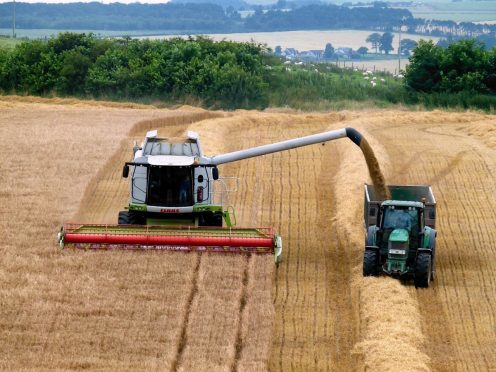Early indications from Scotland’s cereal and oilseed rape harvest have painted 2016 as a particularly dismal year.
The first estimates from Scotland’s Chief Statistician, Roger Halliday, reveal production figures down almost in their entirety – with less land sown, producing significantly less yield.
Falling to an 18-year low, the yield from the country’s most important cereal crop, spring barley, is expected to plummet by 17% to just 1.27million tonnes, whilst winter barley likewise saw a 15% fall to 345,000tonnes.
The combined figures provide Scotland with a total estimated cereal harvest back 11% on the previous year.
Hitting rock bottom oilseed rape ebbed to an all-time low, with yields averaging just 1.2 tonnes per acre – the worst level since records began in 1992.
Although wheat held slightly more steadily dropping just 7% to 935,000tonnes, oats painted the only positive picture with the Scottish oat crop expected to yield more than 200,000tonnes for the first time since the 1970s.
Mr Halliday said although high winds certainly spoilt the oilseed harvest, there was no catastrophic weather responsible for reduced cereal yields – merely a series of “less than ideal factors” affecting the seed bed, growing conditions and the final harvest.
“A low expectation of price may have led some farmers to reduce inputs, but the lack of warmth and sunlight during the summer meant that this yielded a smaller grain,” he said.
However, Gavin Dick, AHDB Cereals and Oilseeds Scottish knowledge exchange manager said, having spoken to many farmers across the country, final results were likely to paint a much more variable picture.
“We are seeing variations in both crops and regions. In some regions we have seen some good yields, while others are seeing significant declines,” said Mr Dick.
“It’s difficult to get a clear picture regarding this year’s harvest. Certain crops are doing well in some areas, while in others they have disappointed.”
Overall Scotland is expected to achieve 2.8million tonnes of cereal production, with yields averaging around 2.63 tonnes per acre; ranging from 2.14 tonnes per acre for spring barley to 3.52 tonnes per acre for wheat.
The total area of land sown for cereal – 1.057million acres for 2016 – was back by 3%.
The Scottish Government uses these early statistics to assess the economic well-being of the cereal sector and to determine any potential market impact. Final estimates, based on a survey of cereal and oilseed rape farms, will be published by Holyrood in December.










